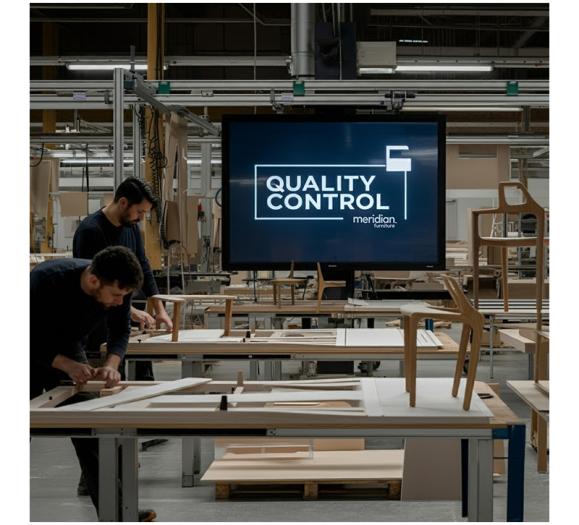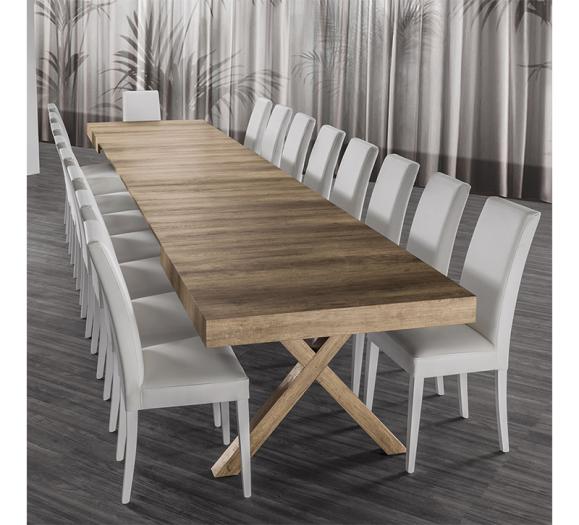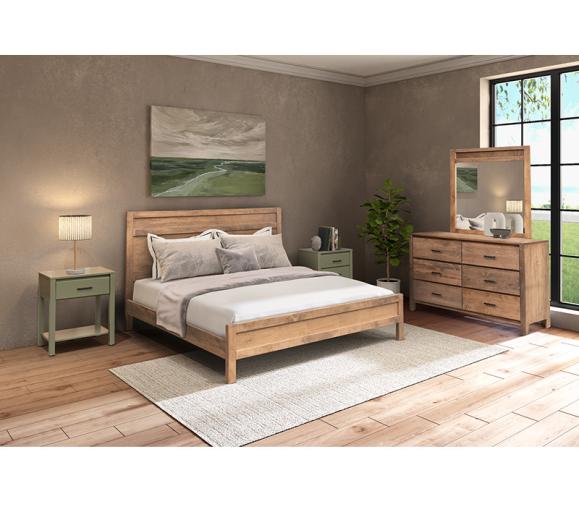The comments sections of news articles can be some of the most enlightening places on the internet (provided you stay off hard news comment sections). A comment from the article "Why Does This Couch from West Elm Suck So Much?" reads "There should be classes on what makes good furniture." Another one from the Buzzfeed article "How One Generation Changed the Way We Think About Furniture" says, "Ok, so then where do I buy furniture that doesn't fall apart? Like, for real and not for image purposes?"
There seems to be a great information gap in how to buy furniture. Millennials want to learn about what makes good furniture. They want pieces that stand up against time like the pieces their parents owned. While not all Millennials are ready for price points above IKEA or Wayfair (many are still in grad school or haven't moved from an entry level position just yet), others are dying for someone to tell them what makes furniture high quality and where they can buy it.
Furniture retailers and interior designers: This is your call-to-action. Your audience is hungry for information. Now it's up to you to provide it. If you're blogging (and if you're not, read this first), use your furniture blog to share your expertise.
Here are five topics to get you started.
Fast Furniture
You've probably heard the term, "fast fashion," which refers to cheaply produced fashion that is ultimately made to break after a few wears and sold at a very low price. Manufacturers save money by producing cheap clothing, and they make more money because buyers have to keep purchasing new clothing from them to replace the pieces that wear out.
Fast furniture is the new buzzword, and it refers to cheap furniture mainly sold at IKEA, Target, Walmart and online retailers: cheaply made, quick to break. The business model is the same: produce the cheapest furniture possible that will break and force the consumer to buy from them again.
Regardless of the industry's feelings on fast furniture, it's a reality, and it does have a place. College students and recent grads, for example, have no budget for furniture, so fast furniture makes sense. As this study shows, Millennials are also more likely to move across state lines for jobs and school. They don't have the budget to hire professional movers, so why spend money on furniture that may be lost or damaged in a move?
But it's easy to fall into a rut, and even some seemingly lasting furniture, just isn't made to last. Last February, The Awl writer Anna Hezel sounded off on West Elm's Peggy couch — a $1,200 couch that began falling apart within weeks of ownership. At 28, Hezel has never purchased expensive furniture before, and $1,200 seemed like a fair price point to get a good piece of furniture. She was distraught, to say the least, when West Elm employees informed her that Peggy was only meant to last one to three years.
Millennials can't always spot fast furniture, especially when price points are a little higher. In your blog, identify fast furniture to your audience and acknowledge its place. Discuss why and how it is cheaply made and why the furniture is not sustainable in the long run. Compare prices and quality over time and show how a good investment will save money.
Dos and Don't of Furniture Shopping
The classic Dos and Don'ts list are quick reads and easy to put together. Furniture blog readers like them for their straight-forward information: do this, don't do that. For shoppers with little experience buying furniture, a Dos and Don'ts list can be a great starting point.
One way to do this piece is to frame it through how you imagine customers should shop for furniture. You might start with "Do take measurements of your space" and "Don't forget to measure the doors into the room(s) you're buying furniture for." Move the article through the sales process, offering easy tips such as "Do test sit on every couch/chair before buying" and "Don't be afraid to ask questions."
For Millennial customers especially, this will be their first time shopping in a store for furniture. Give them information you wish every customer had before they entered your store, and you may have more productive customer experiences.
Furniture Construction
In some ways, furniture construction materials can be a lot like food label ingredients: There are some you cannot pronounce and you have no idea what they are. Product descriptions on websites can also be misleading. This couch from Wayfair, for example, says the legs are made of wood, but if you scroll down under Wood Type, it lists No Wood. At that price point, you can infer that this product is probably not made with real wood.
This is obvious to most people in the industry, but to consumers — especially young ones — it's just not. Though they can probably guess that they're not getting real wood, they don't always know why that matters.
Talking about the types of wood, construction styles and seat fillers can also be great blog topics. Explain how different pieces of furniture are put together and what goes into long-lasting design. Do multiple blogs on different construction types as well as a post on tips for spotting poorly made furniture. In a way, you're taking customers behind the scenes to explain the pieces they use every day.
Style and Furniture
We all want to be trendy, but trends go in and out of style every few years. Replacing a shirt is one thing; replacing an expensive couch is another. While everyone should buy furniture that makes them happy, it's worth asking young buyers to think of their purchases as how they'll look in 10 years. Will they still love the color? Will they like the shape of the piece?
Offer simple advice on trends: buy neutral large furniture and trendy decor. Decor is less expensive and easy to replace. If the tables and sofas are neutral colors and shapes, the decor can make the style statement of the room.
You can also talk about reupholstering furniture as a way to keep pieces longer. Many buyers, not just Millennials, feel a little reluctant to invest in nicer furniture because they have or plan to have pets and children, who will probably inflict some damage on their expensive furniture. Good fabric is made to stand up against kids, but reupholstering is always an option as well, even if fewer people talk about it.
Furniture Care
Even with proper upkeep, fast furniture isn't meant to last for more than a few years, and Millennials aren't used to taking good care of their IKEA and Target furniture. But we know that regular cleanings and good care can keep furniture in the best condition for years to come, so it's time to educate Millennials on how to take care of furniture.
Choose a piece of furniture for each post and give a few recommendations for how to take care of it. Discuss how good care means a longer lifespan for your furniture and how a little bit of care can go a long way. Then recommend some of your favorite cleaning and care products to readers and give your best tips for using them.
Final Furniture Blog Tips
After you've written all this great content, make sure you use it. Post your furniture blogs to your social media channels often to encourage readership among your followers, and blast your blog posts in emails to customers. When you make a sale, mention your care tips on your website, and be sure to give buyers a card with your web address on it so they know where to find your content. When customers call with questions, refer them to your blog and tell them a little bit about how your content can help. If you offer personal appointments, send an email before the appointment with links to your blog to help customers start thinking about how to buy furniture.







